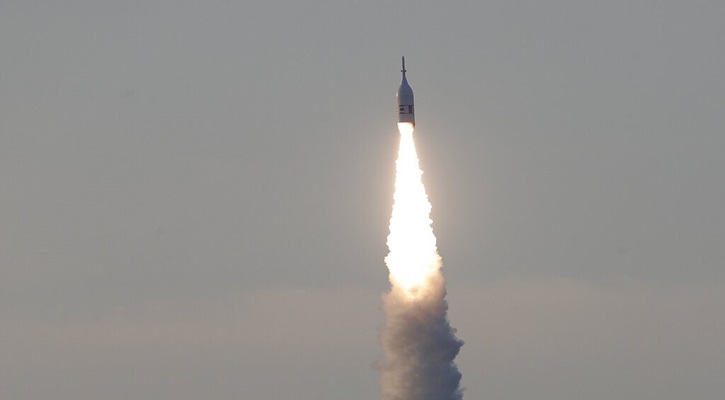Rolle im Portfolio
The iShares MSCI Brazil ETF provides exposure to many of the biggest and most liquid components of the Brazilian equity universe. Brazil has seen remarkable growth over the last several decades, and now ranks as the world’s seventh largest country by nominal GDP. In turn, Brazilian equities have gone from fringe emerging market exposure to an increasingly important part of a globally balanced portfolio. The MSCI Brazil Index is broadly diversified by sector, but diversification at the company level is limited, with nearly 50% of the index within the top five firms.
Returns from Brazilian equities have been erratic, with annual volatility of more than 35% since 1999, versus about 16% for the MSCI World. An investment like this therefore requires a lengthy time horizon and a strong stomach to handle the swings. The fund pays out dividends from its underlying holdings on a quarterly basis, so it may suit an investor looking for income.
Fundamentale Analyse
Thanks to a wealth of natural resources, Brazil benefited from the rise in commodity prices over the last decade and the growth of raw material exports to China. With China’s growth slowing, however, the demand trajectory for Brazil’s commodities --especially iron ore and oil-- is in doubt. Further muddying the picture is the extensive shale gas discoveries in the US, which could put pressure on prices.
Politically, Brazil is in flux. President Dilma Roussef secured a second term in the October 2014 election by a narrow margin, showing the country’s growing social unrest and public dissatisfaction with ineffective government spending, but her approval rating remains low. Roussef promised to introduce political reforms in her second term, but persistent political corruption and an unwieldy bureaucratic system could hamper her efforts.
Against this backdrop, Brazil’s growth has been rather erratic in recent years. From its record setting 7.5% in 2010, GDP growth tumbled to 2.3% in 2013 and only 0.1% in 2014. The HSBC Brazil Composite Output Index, which measures conditions in both the manufacturing and services sectors of the economy, was 52.3 in March 2015 (a value above 50 indicates expansion). Much of the expansion has come in the run up to the 2016 Olympic Games, although the degree of expansion has tapered off from higher levels earlier in 2014 following the completion of the FIFA World Cup.
Inflation, however, is still a real concern for the country. Brazil has a target inflation rate of 6.5% but actual inflation has approached 7.4%, above the maximum deemed tolerable. To combat rising prices, Brazil’s central bank, which is not entirely independent, hiked interest rates to 12.75% in March, a six-year high. If that tightening stance continues, it may weaken an already fragile economy. But at the same time, it could also help support the Brazilian real by attracting investors who seek higher returns.
Indexkonstruktion
The MSCI Brazil Index is a free float market capitalisation-weighted index currently consisting of 80 securities and covering approximately 85% of the Brazilian equity market. New entrants must pass minimum requirements for liquidity and length of trading history. It is reviewed quarterly, and rebalanced semi-annually with new size cut-offs calculated. The median market cap of the constituents is $2.5 billion. The top sectors are financials (30-35%), followed by consumer staples (18-22%), materials (10-15%) and energy (10-15%). There is some concentration within the top companies. Including both the common stock and preferred shares, oil company Petrobras makes up 7-12% of the total, and mining group Vale accounts for 5-8%. About 50 of the 75 securities in the index have weights of less than 1%.
Fondskonstruktion
The fund uses full physical replication to try to capture the performance of its benchmark, owning – to the extent possible and efficient – shares in the underlying constituents in the same weights as those of the index. The fund uses futures for cash equitisation purposes, which helps to limit tracking error. The fund does not engage in securities lending.
Gebühren
The fund’s total expense ratio (TER) is 0.74%, which is higher than that of other ETFs offering similar exposure. Other costs potentially carried by the unitholder but not included in the total expense ratio include transaction costs on the infrequent occasions when the underlying holdings change, and bid-ask spreads and brokerage fees when buy and sell orders are placed for ETF shares.
Alternativen
A number of providers offer products tracking the MSCI Brazil Index, including Amundi, Lyxor, HSBC and db x-trackers. The UBS fund has the lowest fees, with a TER of 0.43%. Another choice for Brazilian exposure is Lyxor ETF Brazil, which tracks the similar Bovespa Index. It charges 0.65%.
Die in diesem Artikel enthaltenen Informationen dienen ausschließlich zu Bildungs- und Informationszwecken. Sie sind weder als Aufforderung noch als Anreiz zum Kauf oder Verkauf eines Wertpapiers oder Finanzinstruments zu verstehen. Die in diesem Artikel enthaltenen Informationen sollten nicht als alleinige Quelle für Anlageentscheidungen verwendet werden.

















